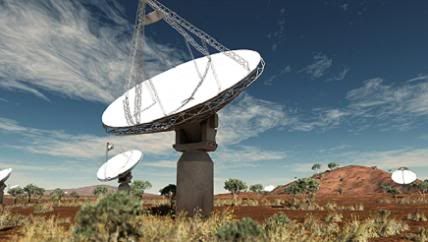Post by glactus on Sept 2, 2009 3:45:38 GMT

The SKA field array
Opportunities, benefits and challenges of building the world's biggest radio telescope, the Square Kilometre Array (SKA)were in the spotlight at the SKA Forum 2009 in Cape Town this week. Leading international astronomers met with representatives from governments and funding agencies from around the world.
Delegates felt that the current world economic crisis should not have a negative impact on the project; in fact, it presents an unrivalled opportunity to invest in critical science infrastructure and skills.
Countries which would recover best from the economic malaise were those that invested in the future. "The world's current and future challenges demand scientific thinkers and technological innovation," said Professor John Womersley of the Science and Technology Facilities Council in the UK. only 20 to 30 per cent of astronomy is about understanding the universe. "The rest is about training people!"

SKA dishes
"The SKA belongs to the whole world!" said Professor Lyn Beazley, Chief Scientist of Western Australia. "We must share the excitement of the SKA with as many people as possible and the mass media is a key partner in achieving this goal."
Dr Robert-Jan Smits of the European Commission confirmed EU support for the project because of its enormous potential to shift the frontiers of knowledge.
"On the science side, the SKA represents an enormous leap in radio astronomy into an area that we have not investigated before," said Professor Malcolm Longair, eminent cosmologist from Cambridge University in the UK. "It will open up a new era in astrophysics and cosmology for all astronomers and has huge potential for new discoveries."
While astronomers are excited about the SKA's potential to answer questions about the universe, governments and funders view this project as a way to attract young people into science and engineering and to equip them with very high-level skills.
The SKA will consist of thousands of dishes and other collecting devices, spread over a vast area, but working together as one instrument with a joint receiving surface of one square kilometre. Cutting edge technologies and computing power like never before will make this a true "time machine", able to detect very faint celestial signals in order to look back to the early universe.
"Once the SKA comes online, its computing power will be equal to all the people on the planet doing a billion calculations per second all at the same time,"
Credits:
Field array and dish images by google. com
Text: This is part text only. See full text and all scientists involved at Space daily.com/Sky Nightly:
www.skynightly.com/reports/Australia_Opens_New_Astronomy_Research_Center_999.html


